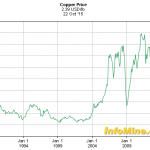We have been subjected to a lot of analysis about the yield curve flattening, especially as the short end moved up dramatically in January. As Mish Shedlock put it in a recent blog[1], it all depends on one’s perspective as to whether the curve is flattening or steepening. Certainly, the 30-2yr spread has flattened dramatically since 2014, suggesting the presence of significant trend that remains largely intact. ( Figure 1).
Figure SEQ Figure * ARABIC 1

Flattening yield curves can be interpreted from different perspectives. At times flattening occurs when short rates move up more quickly than long rates, signaling that central banks have embarked on tightening monetary conditions. Today, that seems to be the case as the Fed makes it clear that further rate hikes are in the works as part of its overall aim to normalize short-term rates. At other times, flattening may occur when the “term premium” falls. That is, investors in the long end of the market are prepared to accept a relatively lower interest rate over, say, over a 30 year period. They are no longer concerned with future inflation and do not require additional risk protection. In the United States, the 30-year bond is yielding just 3%, relatively low by any historical standards.
It appears that both interpretations are operating today. Clearly, the Fed is on a path of raising the Fed funds rate. At the same time, although inflation expectations have perked up recently, they remain quite low and have not really spooked long-term bond investors to change their minds about the inflation outlook.
Figure SEQ Figure * ARABIC 2 U.S. and Canadian Spreads

















Leave A Comment